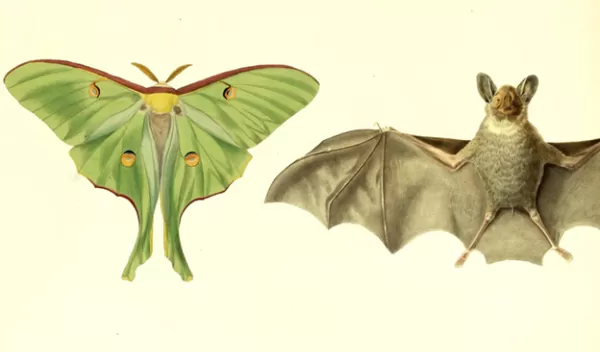
Luna moths use their tails solely for bat evasion
Biologists took a close look at the tails of luna moths, Actias luna, to test their role in predation and sexual selection. Scientists have known that luna moths — and other related silk moths — use their long, trailing tails to misdirect bat attacks. Now, researchers have taken the next step: understanding how.
"They have projections off the back of the hindwings that end in twisted, cupped paddles," said Juliette Rubin of the Florida Museum of Natural History and lead author of two studies on the subject. "From experimental work with bats and moths in a flight room, we've found that these structures seem to reflect bat sonar in such a way that bats often aim their attacks at the tails instead of the main bodies."
The U.S. National Science Foundation-supported studies were published in the journals Biology Letters and Behavioral Ecology. Akito Kawahara of the Florida Museum of Natural History, and Nick Martin and Kathryn Sieving of the University of Florida are co-authors.
Traits that evolve for one specific function can often be co-opted by natural selection for another, and Rubin wondered whether the twisted tails of luna moths might come with any additional benefits or hidden costs.
Silk moths have independently evolved tails on multiple occasions across three continents, and the appendages can vary significantly in length. Hind wings in some species can extend to more than twice the size of the moth's wingspan, and the longer the tail, the more likely a moth will successfully thwart a prowling bat. Luna moths' long tails effectively throw off pursuing bats by creating decoy targets.
Luna moths live incredibly short lives. Once they emerge from their cocoons, the moths have about a week to find a mate and reproduce before dying. "This creates a very intense period of adulthood, where surviving the night is of the utmost importance," Rubin said.
Luna moths are mostly inactive during the day, reducing their chances of being nabbed midair. If they don't do a good enough job concealing themselves, however, they run the risk of not surviving to nightfall.
“These studies are a reminder that some of the elaborate traits we see in nature may appear to us to be ornamental, but yet they actually serve very important functions for the animals that possess them,” said Susan Renn, a program director in NSF’s Division of Integrative Organismal Systems.
